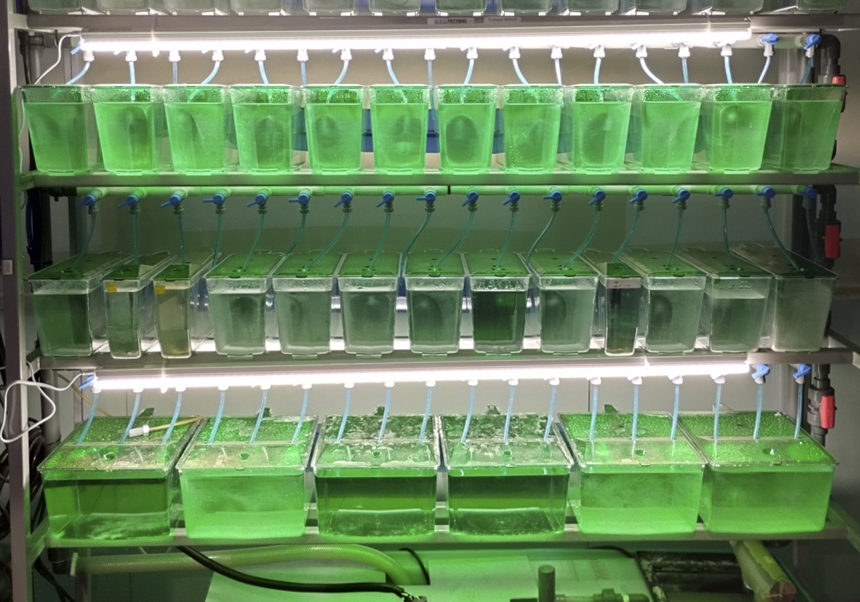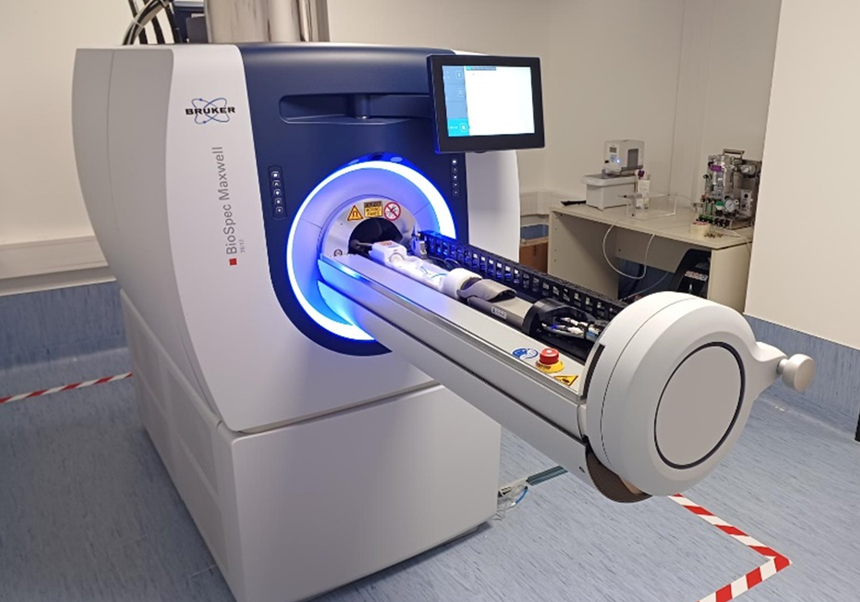
The Universitat de València, in the use of its competencies and for the normal development of the teaching and research activities, makes use of chemical substances that, although primarily intended for the industrial production of important and common derivatives necessary in our society, have been classified as drug precursors according to REGULATION (EC) No 273/2004 OF THE EUROPEAN PARLIAMENT AND OF THE COUNCIL of 11 February 2004. These substances, when diverted from their legal course, could be used in the production of different types of drugs.
The applicable regulations establish control measures for these substances, as well as a disciplinary procedure, the Ministry of Interior is the competent authority in regards to the control and supervision of their trade within the European Union.
For this reason, there is a General Registry of Operators of Scheduled Chemical Substances at the Ministry of Interior, where natural and legal persons dealing with scheduled substances must be registered. The Universitat de València, as a user of scheduled substances, holds an activity license and is registered in the General Registry.
Every year, the Ministry of Interior requests information regarding purchases, use, and storage of scheduled substances. For that reason, the Universitat de València completes the "Annual Questionnaire for Declaration of Operations with Scheduled Chemical Substances."
The Central Service for Experimental Research (SCSIE), commissioned by the Vice-Principal for Research, is the service in charge of the dialogue between the Universitat de València and the Ministry of Interior. Through the email precursores@uv.es, SCSIE receives from the Ministry the Annual Questionnaire and subsequently forwards it to the different departments, research institutes, services, units of the UV, which are responsible for the control and use of scheduled substances, and also of the declaration made of the different questionnaires.
After receiving them, SCSIE consolidates all these questionnaires into a single document, which is annually sent to the Ministry of Interior. SCSIE also provides the appropriate guidance on completing the questionnaires and conveys any doubts related to scheduled substances that may arise to the Ministry of Interior.
For more information, please contact precursores@uv.es or call 96 35 44618.
For the purposes of this Regulation the following definitions shall apply:
- ‘scheduled substance’ means any substance listed in Annex I that can be used for the illicit manufacture of narcotic drugs or psychotropic substances, including mixtures and natural products containing such substances but excluding mixtures and natural products which contain scheduled substances and which are compounded in such a way that the scheduled substances cannot be easily used or extracted by readily applicable or economically viable means, medicinal products as defined in point 2 of Article 1 of Directive 2001/83/EC of the European Parliament and of the Council and veterinary medicinal products as defined in point 2 of Article 1 of Directive 2001/82/EC of the European Parliament and of the Council;
- ‘non-scheduled substance’ means any substance which, although not listed in Annex I, is identified as having been used for the illicit manufacture of narcotic drugs or psychotropic substances;
- ‘user’ means a natural or legal person other than an operator who possesses a scheduled substance and is engaged in the processing, formulation, consumption, storage, keeping, treatment, filling into containers, transfer from one container to another, mixing, transformation or any other utilisation of scheduled substances;
ANNEX I
List of Scheduled Substances
The CAS No is the ‘chemical abstracts service registry number’, which is a unique numeric identifier specific to each substance and its structure. The CAS No is specific to each isomer and to each salt of each isomer. It must be understood that the CAS Nos for the salts of the substances listed above will be different to those given.
|
Substance |
CAS No |
|
CATEGORY |
|
|
1-Phenyl-2-propanone (Phenylacetone) |
103-79-7 |
|
Diethyl (phenylacetyl) propanedioate (DEPAPD) |
20320-59-6 |
|
Methyl alpha-phenylacetoacetate (MAPA) |
16648-44-5 |
|
Ethyl alpha-phenylacetoacetate (EAPA) Also known as ethyl 3-oxo-2-phenylbutanoate, according to IUPAC (The International Union of Pure and Applied Chemistry). |
5413-05-8 |
|
Methyl 2-methyl-3-phenyloxirane-2-carboxylate (BMK methyl glycidate) |
80532-66-7 |
|
2-methyl-3-phenyloxirane-2-carboxylic acid (BMK glycidic acid) |
25547-51-7 |
|
N-acetylanthranilic acid / 2-acetamidobenzoic acid |
89-52-1 |
|
Alpha-phenylacetoacetamide (APAA) |
4433-77-6 |
|
Alpha-phenylacetoacetonitrile (APAAN) |
4468-48-8 |
|
Isosafrol (cis + trans) |
120-58-1 |
|
3,4-methylenedioxyphenylpropan-2-one / 1-(1,3-Benzodioxol-5-yl)propan-2-one |
4676-39-5 |
|
Piperonal |
120-57-0 |
|
Safrole |
94-59-7 |
|
Ethyl 3-(2H-1,3-benzodioxol-5-yl)-2-methyloxirane-2-carboxylate (PMK ethyl glycidate) |
28578-16-7 |
|
Methyl 3-(1,3-benzodioxol-5-yl)-2-methyloxirane-2-carboxylate (PMK methyl glycidate) |
13605-48-6 |
|
Methyl 3-oxo-2-(3,4-methylenedioxyphenyl)butanoate (MAMDPA) Also known as methyl 2-(2H-1,3-benzodioxol-5-yl)-3-oxobutanoate, according to IUPAC. |
1369021-80-6 |
|
3-(1,3-benzodioxol-5-yl)-2-methyloxirane-2-carboxylic acid (PMK glycidic acid) |
2167189-50-4 |
|
N-phenyl-1-(2-phenylethyl)piperidin-4-amine / 4-anilino-N- phenethylpiperidine (ANPP) |
21409-26-7 |
|
1-(2-phenylethyl)piperidin-4-one / N-phenethyl-4-piperidone (NPP) |
39742-60-4 |
|
N-phenylpiperidin-4-amine (4-AP) |
23056-29-3 |
|
Tert-butyl 4-anilinopiperidine-1-carboxylate (1-boc-4-AP) |
125541-22-2 |
|
N-phenyl-N-(piperidin-4-yl)propanamide (norfentanyl) |
1609-66-1 |
|
Ephedrine |
299-42-3 |
|
Pseudoephedrine |
90-82-4 |
|
Norephedrine |
14838-15-4 |
|
Ergometrine |
60-79-7 |
|
Ergotamine |
113-15-5 |
|
Lysergic acid |
82-58-6 |
|
The stereoisomeric forms of the substances listed in this category not being cathine, whenever the existence of such forms is possible. The salts of the substances listed in this category, whenever the existence of such salts is possible and not being the salts of cathine. |
|
|
(1R,2S)-(-)-chloroephedrine |
110925-64-9 |
|
(1S,2R)-(+)-chloroephedrine |
1384199-95-4 |
|
(1S,2S)-(+)-chloropseudoephedrine |
73393-61-0 |
|
(1R,2R)-(-)-chloropseudoephedrine |
771434-80-1 |
|
CATEGORY 2 |
|
|
SUBCATEGORY 2A |
|
|
Red phosphorus |
7723-14-0 |
|
Acetic anhydride |
108-24-7 |
|
SUBCATEGORY 2B |
|
|
Phenylacetic acid |
103-82-2 |
|
Anthranilic acid |
118-92-3 |
|
Piperidine |
110-89-4 |
|
Potassium permanganate |
7722-64-7 |
|
The salts of the substances listed in this category, whenever the existence of such salts is possible. |
|
|
CATEGORY 3 |
|
|
Hydrochloric acid / Hydrogen chloride |
7647-01-0 |
|
Sulphuric acid |
7664-93-9 |
|
Toluene |
108-88-3 |
|
Ethyl ether / Diethyl ether |
60-29-7 |
|
Acetone |
67-64-1 |
|
Methylethylketone (MEK) / Butanone |
78-93-3 |
|
The salts of the substances listed in this category, whenever the existence of such salts is possible and not being the salts of hydrochloric acid and sulphuric acid. |
|















